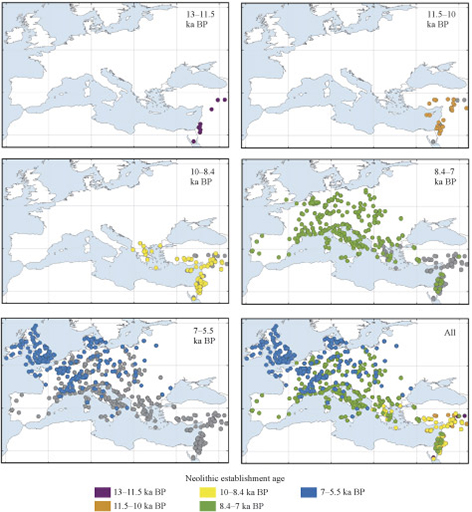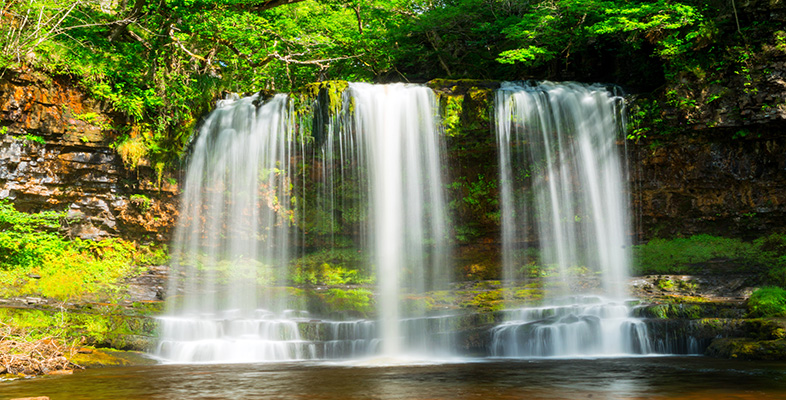4.2 Stopping the ocean conveyor belt
One way to cool the planet, as occurred in the Younger Dryas or the 8.2 ka event, is to stop the ocean conveyor carrying the heat northwards. It is believed that this indeed happened as a result of large quantities of melt water from the North American continental ice sheets flooding into the North Atlantic and changing the surface density of the ocean. Once the conveyor was stopped, the climate was plunged into a cold period.
Although similar events seem to have occurred further back in time, the Younger Dryas and the 8.2 ka events may have been particularly significant for human civilisation. The earliest dated farming settlements are in the Mediterranean about 13 000 years ago – around the time of the Younger Dryas. It is interesting to compare the spread of these settlements across the Middle East and Europe (Figure 23) with the temperature data of Figure 19.
During the first 5000 years of human agriculture, from 13 ka BP to 8.4 ka BP, farming settlements are concentrated on the shores of the Mediterranean and Black Sea. However, after the 8.2 ka event and the collapse of the North American ice sheets, the flooding of fresh water into the Atlantic that stopped the conveyor also caused a rapid sea-level rise of around 1.4 m and large-scale flooding. After this date, the settlements rapidly spread northwards.

The exact driving factor for this human migration is impossible to determine, but it is interesting that it seemed to begin after the 8.2 ka climate event. This is an example of the kind of climate change that society will have to cope with.
